At Ease in a Transylvanian City
Mapping Romanian “tihnă” Over a Weekend in Cluj-Napoca
“When I write about hunger, I am really writing about love and the hunger for it, and warmth, and the love of it . . . and then the warmth and richness and fine reality of hunger satisfied.”
M. F .K. Fisher
“Cluj? Who would actually visit Cluj?” I was asked a while ago by a social media acquaintance I met briefly over coffee.
At first glance, Cluj-Napoca might seem like a puzzling choice to host an urban gathering or to visit for a weekend or a full week. Most travellers choose to see and experience Bucharest’s communist-era boulevards or get lost in Brașov’s postcard-ready Old Town, seeking the visual heaviness of recent Romanian history or the romantic and dramatic castles tucked deep in the Carpathian Mountains.
So I wondered what Cluj could offer, something hidden beyond first impressions, something experienced only in person, slowly, at leisure. At first, it was difficult to find an unbiased answer, as I lived in this city for a few years in my early twenties, and my memory of it clearly shapes how I see it, and why I keep returning every year for a weekend.
Upon closer introspection, I found that there is something quintessentially Transylvanian about Cluj, something I experienced more strongly here than in other Transylvanian cities like Sibiu or Brașov. And that bone-deep knowledge brought me closer to my answer, and to a regional word: tihnă.
The verb a tihni is most commonly used in Transylvania and the northern parts of Romania, including Maramureș, Crișana, and parts of Moldova. It is a regional word that has survived in spoken Romanian, particularly in rural areas. It is one of those not fully translatable words, carrying a texture of emotional and bodily resonance, a kind of ease that is fully savoured. The opposite of restlessness or time-paced enjoyment. The emphasis here is on the bodily aspect; tihnă is more than just ease or relaxation, it is something felt deeply in the body, in a way that satisfies the soul for a prolonged time.
I was recently in Cluj for just three nights, hosting a Flâneurs Project gathering that turned into a casual weekend with friends, similar to the gathering I hosted last year in The Hague. I always wanted to host a gathering in Cluj, as this city is best enjoyed slowly: through bites, coffees, and unhurried conversations. So, I mapped tihnă in the places we visited, the things we ate and drank, and in the way the city encourages slow, focused movement.
Tihnă in Taste
Garlic, Bread, Elderflower Lemonade
As a host and former local, I wanted to start the weekend with a Transylvanian dinner right after we landed in Cluj-Napoca. As a personal tradition, we began our weekend at Garlic – Bites & Tales.
This place offers a variety of dishes where garlic is the star of the menu, and as a Transylvanian, I couldn’t be happier, or feel more at home. Garlic might not be everyone’s craving, but I was lucky that my companions thoroughly enjoyed their meals: garlic bread bite appetizers, followed by mains of chicken with baked potatoes, garlic sauce, pickles, and a bottle of Liliac Fetească Regală, a white wine from Transylvania. For dessert, we had papanași: golden, fluffy cheese doughnuts topped with sour cream and blueberry jam. We stayed until almost closing time, and such a hearty, heavy meal required a night promenade under the soft lights of the Old Town.
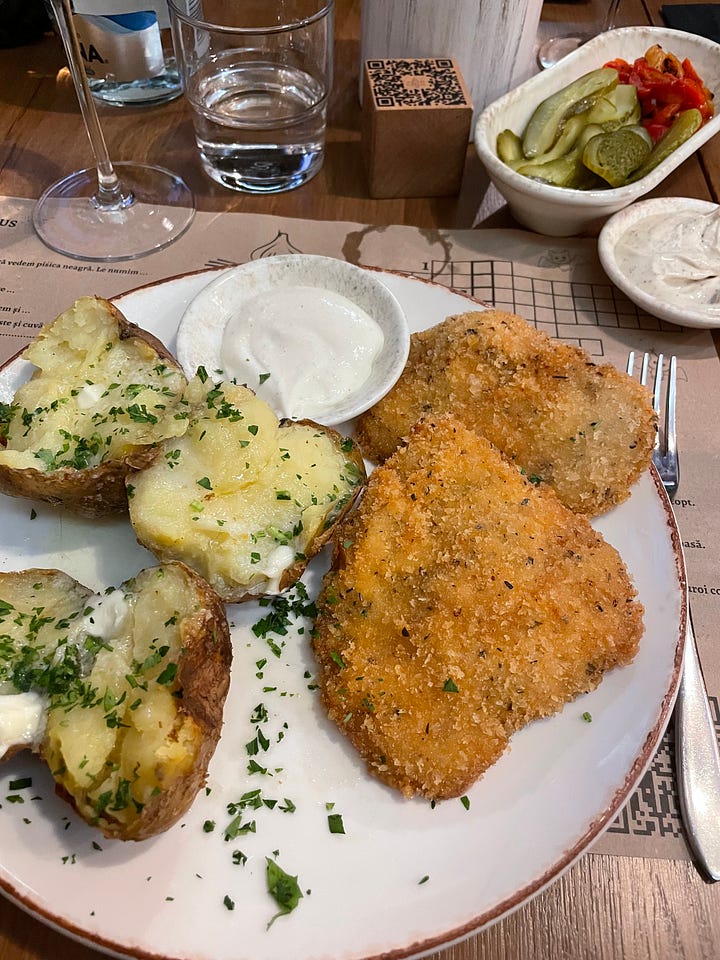
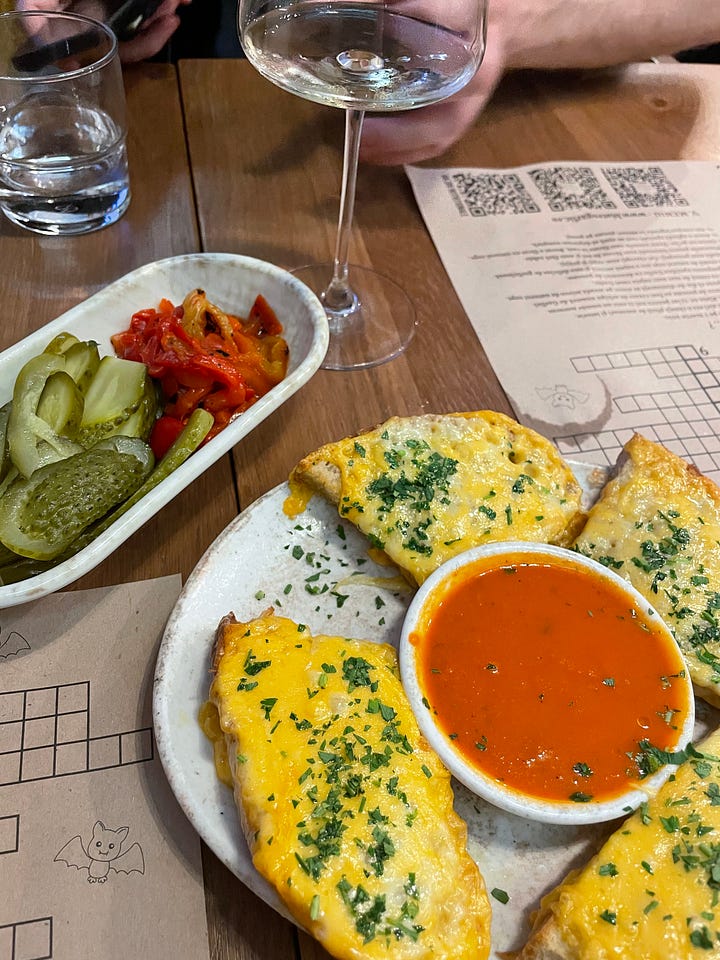
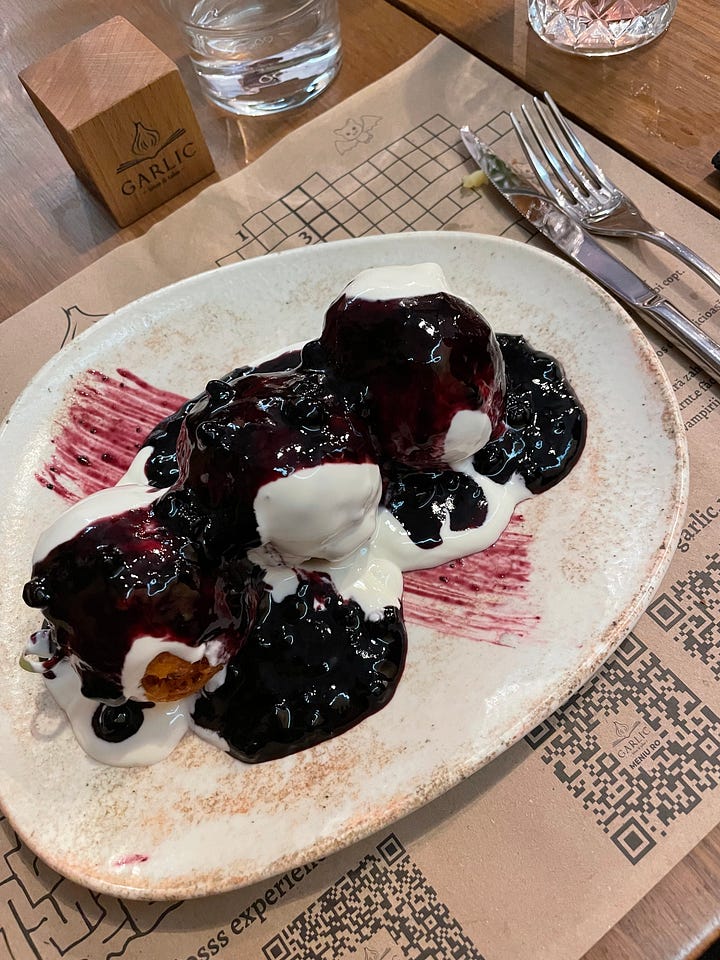
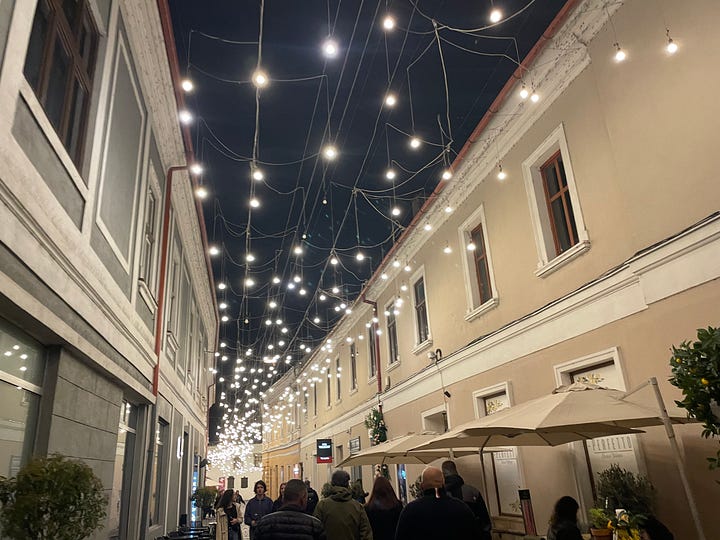
Our brunches and lunches were always set up under the elderflower trees in Piața Unirii, on the terraces, people-watching, sinking into the slowness and vibrancy of the place. Cluj-Napoca is not a big city, but in the city center, things are always happening, there’s plenty of input to digest, to ease into. The local specialty coffee scene is a treat for those who love good coffee, and this culture contributes to the tihnă of the place.
Cluj is also savoured, by locals and travellers alike, through its freshly baked bread, sandwiches, or croissants from the Panemar bakeries scattered throughout the city. Panemar is a quiet constant, a big part of what makes Cluj, Cluj.
Tihnă in Light and Movement
Trees, Shade, Architecture
Light touches the buildings softly when trees offer shade and movement for the eyes. The Gothic, Baroque, Neoclassical, and Art Nouveau buildings, telling the story of Transylvania’s Hungarian, Saxon, Austrian, and Romanian influences, are beautiful in themselves. But what adds to the charm, that particular tihnă feeling, is the way light filters through the many trees planted throughout the city center.
One of the best times to see this light is early in the morning or around golden hour, from Turnul Croitorilor towards the Reformed Church and down Mihail Kogălniceanu Street.
Since I left, over the past ten years, plenty of new pedestrian areas have been created around the historical centre, and that has been the key to why one can savour the light, the taste, and the entire environment: undisturbed, freely, and with full awareness. The pace is slower, and attention less distracted, when there are no cars in sight.


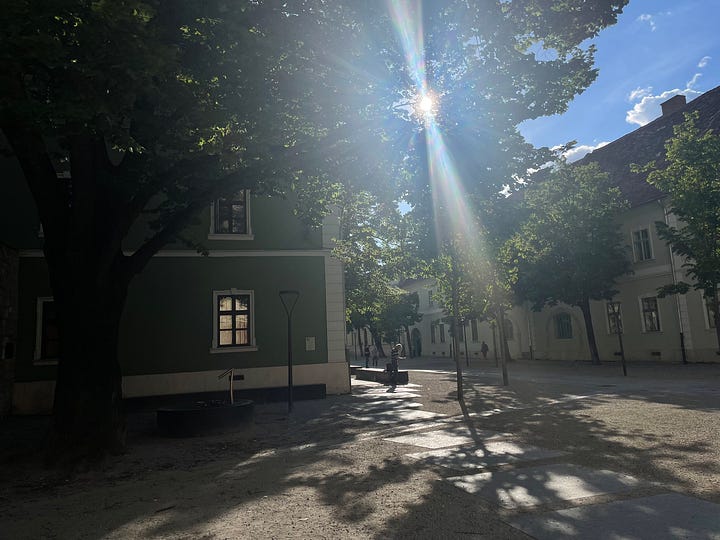
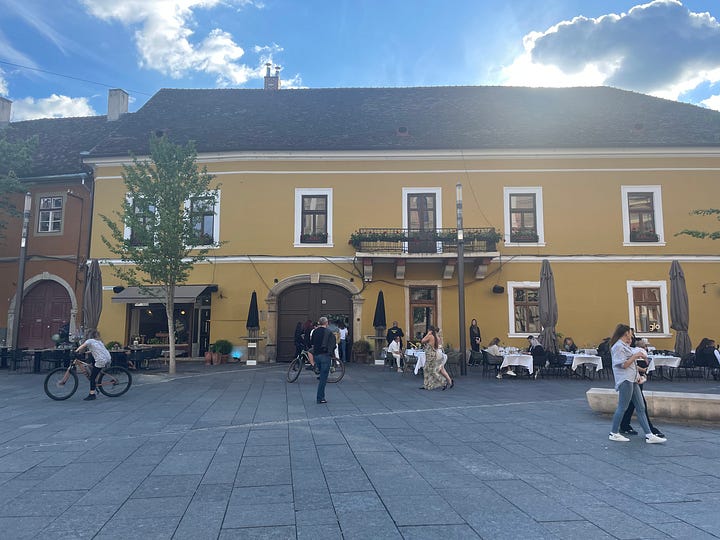
A friend who joined the weekend gathering asked me two good questions on our last night together, over dinner at a Romanian restaurant, Roata:
What has changed drastically for the better since you left? And what could still be changed but hasn’t been?
A lot has changed for the better in terms of urban design and the pedestrian experience since I left, and the change is widely felt, not only in Cluj, but also in lesser-known, smaller towns like Satu Mare, where I was born. Historical city centres are being cared for, thoughtfully redesigned, and given back to the people. And that couldn’t make me any happier.
As for what still needs to change: I believe much more can be done to improve connections across Transylvania, especially through trains and other forms of fast, reliable public transport. There are plenty of raw, wild, beautiful places scattered throughout the region, often hidden in plain sight, but right now, one needs a car to discover them. Then again, maybe some things are better left hidden, only to be found through stories from locals and friends.
—
Thank you for reading. I’ll be in London on the 25th of June, send me a message or an email if you’d like to meet for a walk and / or a drink.
Patricia





